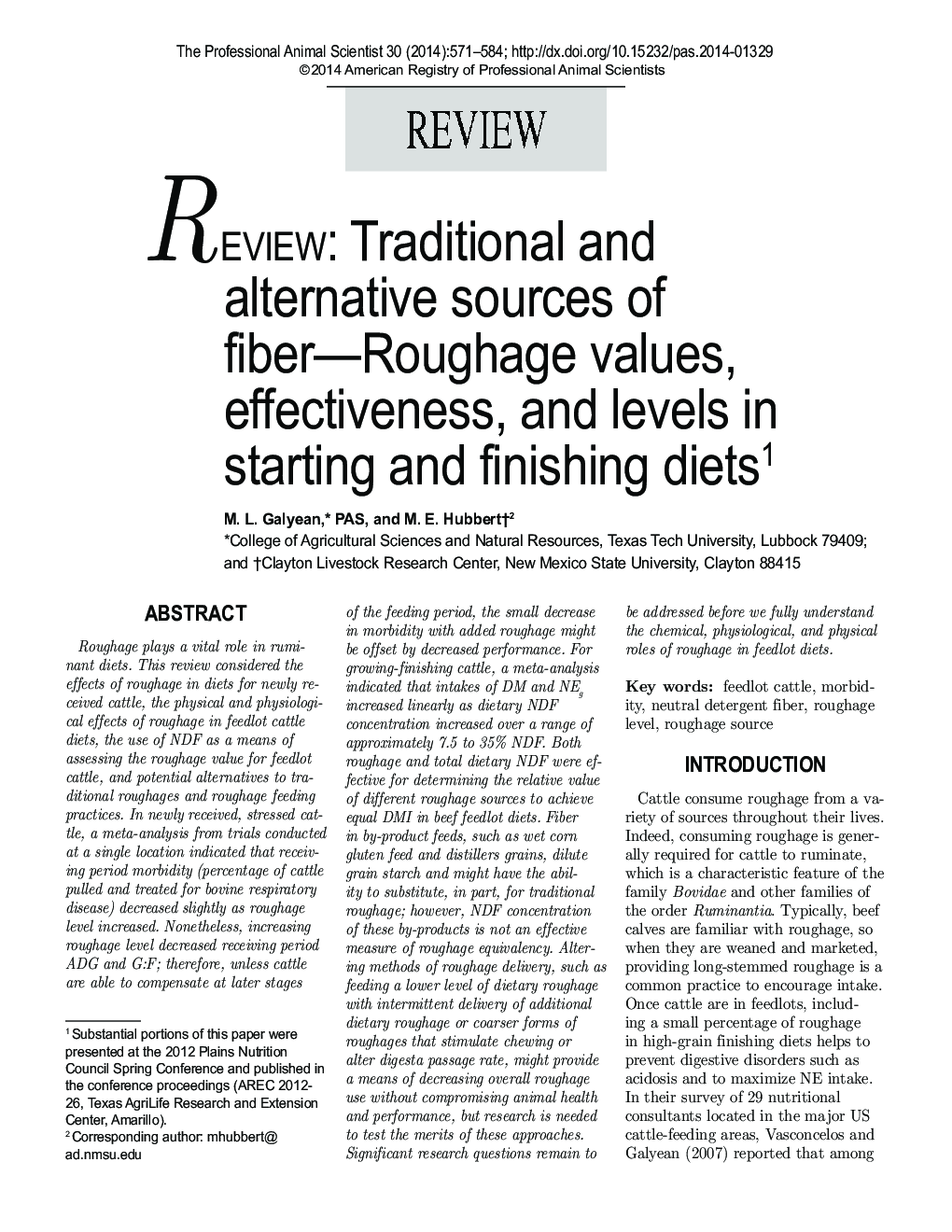| Article ID | Journal | Published Year | Pages | File Type |
|---|---|---|---|---|
| 2453803 | The Professional Animal Scientist | 2014 | 14 Pages |
Abstract
Roughage plays a vital role in ruminant diets. This review considered the effects of roughage in diets for newly received cattle, the physical and physiological effects of roughage in feedlot cattle diets, the use of NDF as a means of assessing the roughage value for feedlot cattle, and potential alternatives to traditional roughages and roughage feeding practices. In newly received, stressed cattle, a meta-analysis from trials conducted at a single location indicated that receiving period morbidity (percentage of cattle pulled and treated for bovine respiratory disease) decreased slightly as roughage level increased. Nonetheless, increasing roughage level decreased receiving period ADG and G:F; therefore, unless cattle are able to compensate at later stages of the feeding period, the small decrease in morbidity with added roughage might be offset by decreased performance. For growing-finishing cattle, a meta-analysis indicated that intakes of DM and NEg increased linearly as dietary NDF concentration increased over a range of approximately 7.5 to 35% NDF. Both roughage and total dietary NDF were effective for determining the relative value of different roughage sources to achieve equal DMI in beef feedlot diets. Fiber in by-product feeds, such as wet corn gluten feed and distillers grains, dilute grain starch and might have the ability to substitute, in part, for traditional roughage; however, NDF concentration of these by-products is not an effective measure of roughage equivalency. Altering methods of roughage delivery, such as feeding a lower level of dietary roughage with intermittent delivery of additional dietary roughage or coarser forms of roughages that stimulate chewing or alter digesta passage rate, might provide a means of decreasing overall roughage use without compromising animal health and performance, but research is needed to test the merits of these approaches. Significant research questions remain to be addressed before we fully understand the chemical, physiological, and physical roles of roughage in feedlot diets.
Related Topics
Life Sciences
Agricultural and Biological Sciences
Animal Science and Zoology
Authors
M.L. PAS, M.E. Hubbert,
